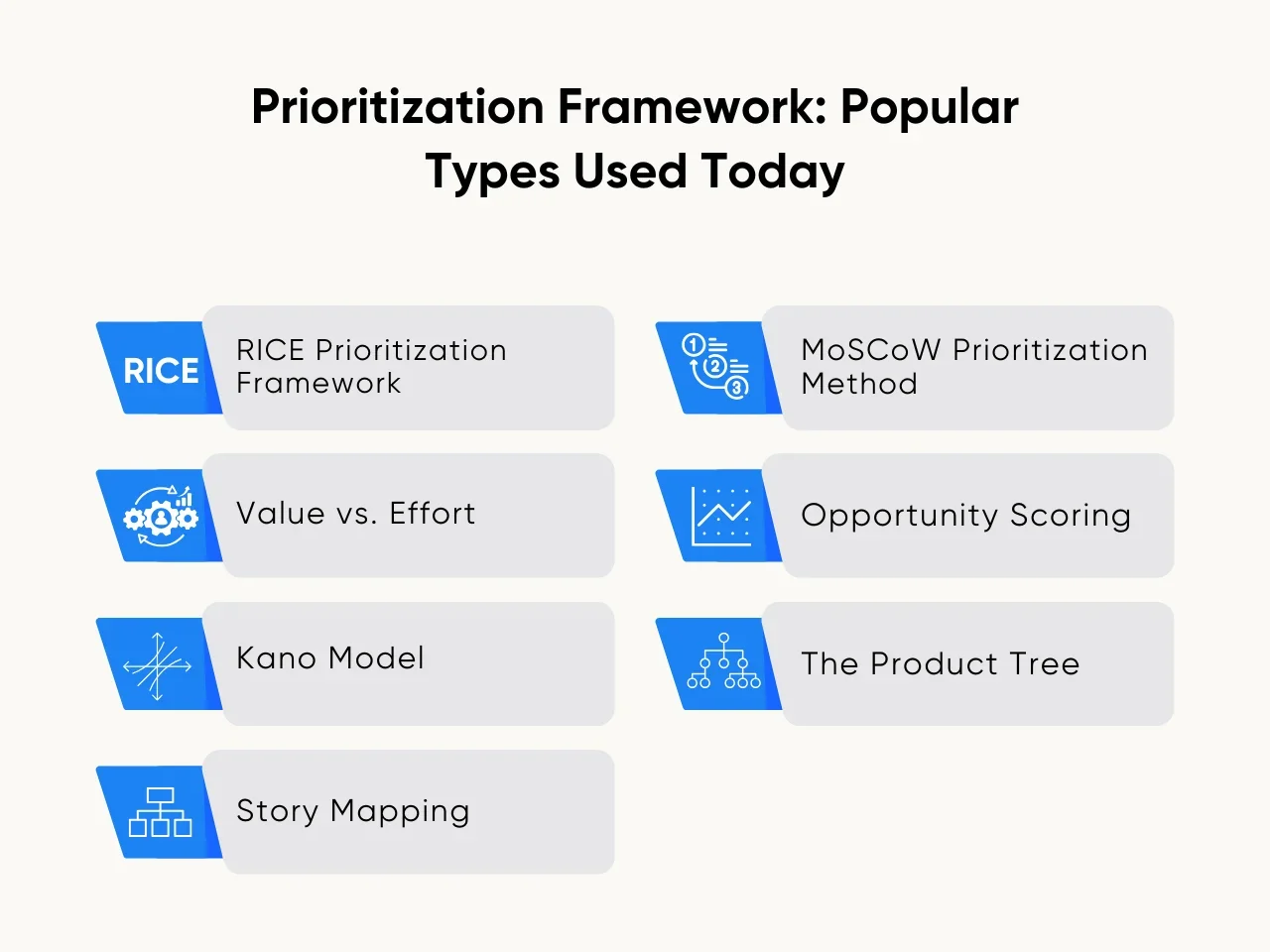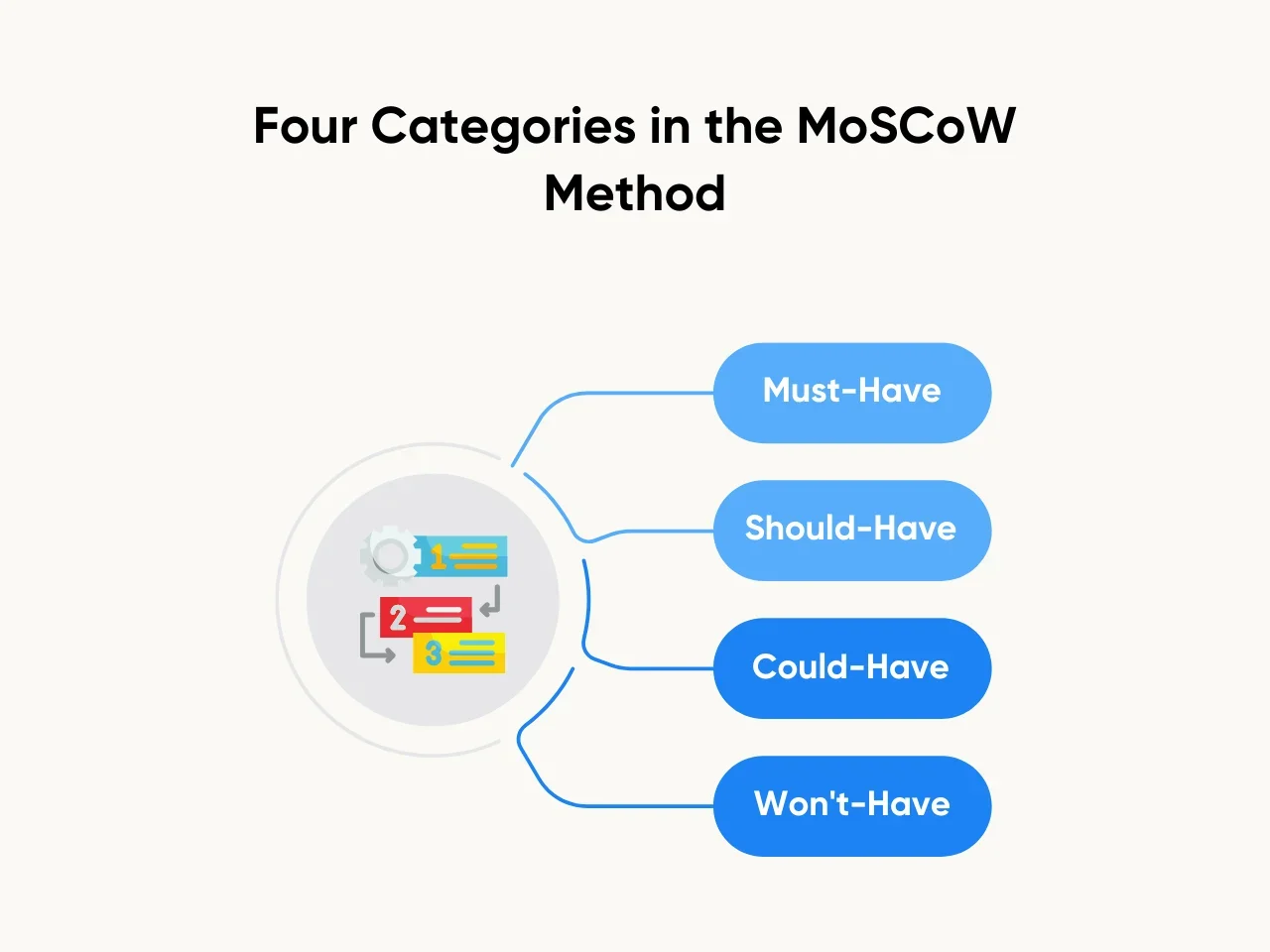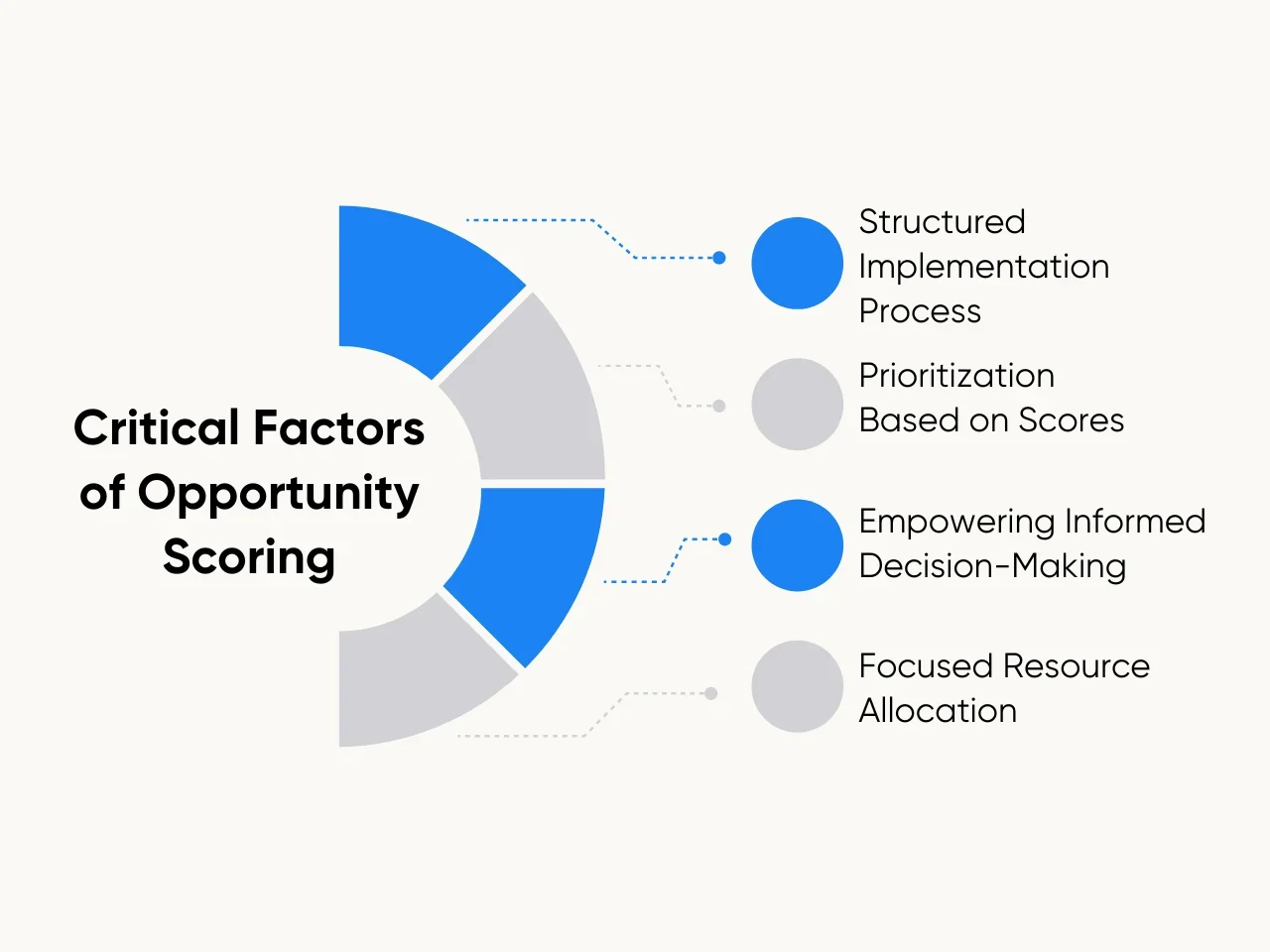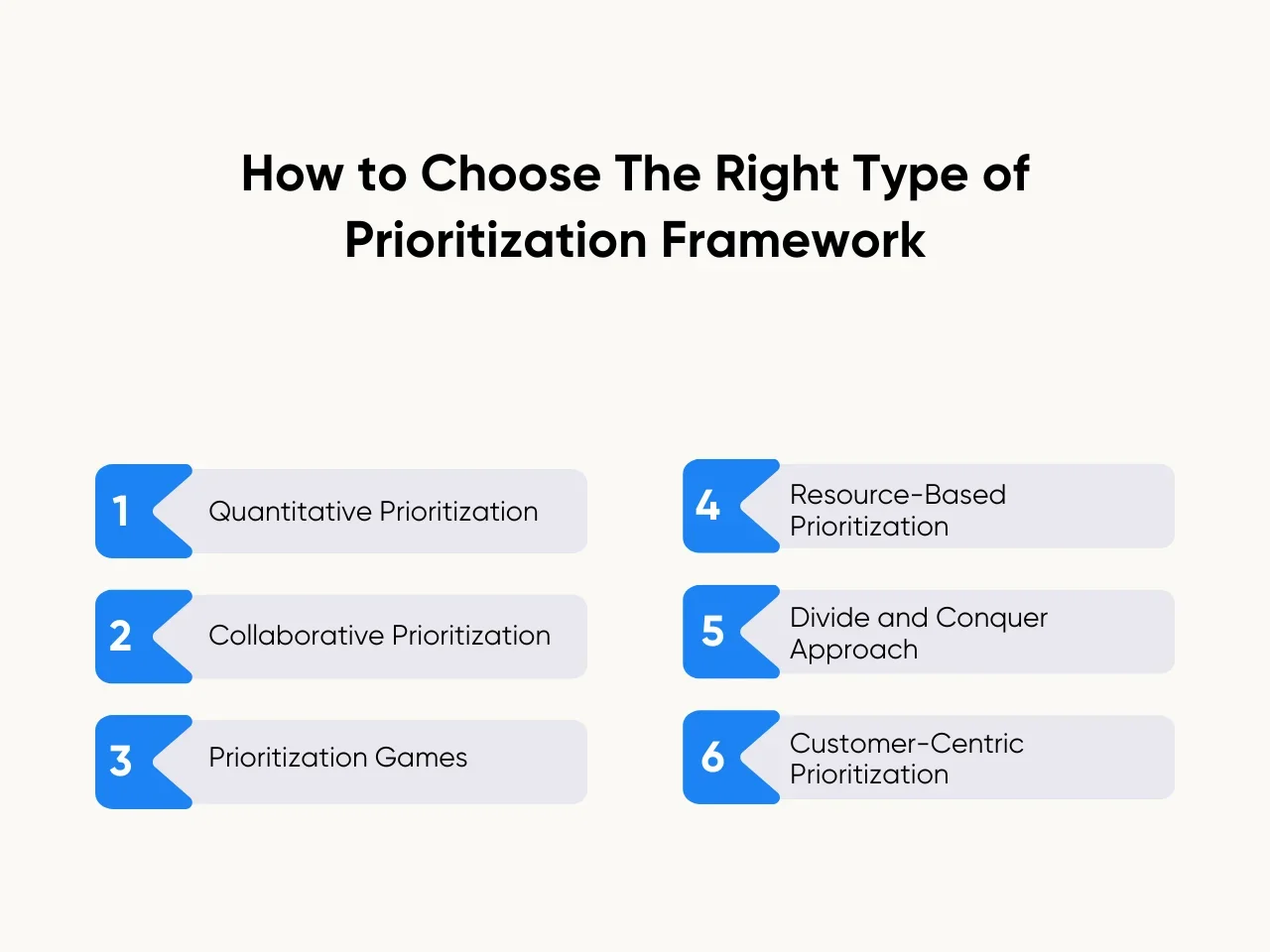Nowadays, product management and development teams often face the constant challenge of limited resources and competing priorities. With ideas, features, and initiatives competing for attention, it becomes crucial to determine what needs to be prioritized systematically. A prioritization framework proves to be a practical solution to this.
Aligning efforts with strategic objectives, this framework prioritizes the most valuable tasks, empowering startups to optimize resource allocation and enhance operational efficiency.
At Aloa, a software outsourcing firm, we have proven experience in the prioritization framework industry. With our expertise in building intuitive software frameworks, we provide the best insights to clients seeking innovative solutions for their businesses. Our team keeps abreast of the latest industry trends and tech solutions, assuring clients to leverage these frameworks for streamlined operations.
In this blog, we will explore the top popular prioritization frameworks, unpacking their potential as transformative project management tools for startups. We will also examine how to choose the suitable one for your business. Afterward, you will know the best frameworks, their benefits, and tips on selecting the ideal one. With this knowledge, you can utilize specific frameworks for your company’s success.
Let's dive in!
What is a Prioritization Framework?
A prioritization framework is a vital tool guiding product management and development decisions. It offers a structured process to assess and rank tasks or features based on criteria like value and impact. Aligning with business goals and customer needs, teams ensure their work contributes effectively to the overall strategy.
This kind of framework helps teams make decisions by methodically evaluating and scoring tasks or features. As responsibilities stack up, It prevents random prioritization and gut-based choices, encouraging data-driven decisions to maximize business value. This is why effective prioritization ensures teams use limited resources wisely, focusing on tasks with the most significant return on investment (ROI).
Prioritization Framework: Popular Types Used Today
Today, various prioritization frameworks are used in product management and development. Each framework has its unique approach, criteria, and benefits. Let's explore some popular types of prioritization frameworks commonly used:

1. RICE Prioritization Framework - Top Choice for Priority Management
The RICE prioritization framework is a widely used method that considers multiple factors to prioritize features or tasks. RICE stands for Reach, Impact, Confidence, and Effort.
Here's how each element function:
- Reach: Measures the number of people or users affected by the feature or task.
- Impact: Quantifies the expected impact or value of the feature on the business goals or customer needs.
- Confidence: Assesses the confidence level in the impact estimation based on data, research, or user feedback.
- Effort: Evaluate the effort or resources required to complete the feature or task.
Scoring each factor on a predefined scale and calculating a final score, the RICE framework enables teams to prioritize work items effectively, prioritizing high-value features or tasks with low effort. It helps product management and development teams make informed decisions, considering the potential impact, cost of delay, and overall value of the work item.
2. Value vs. Effort - Best Prioritization Framework for Decision Making
The value vs. effort prioritization framework is a strategic approach that product management and development teams utilize to enhance decision-making in feature prioritization. This method involves assessing features or tasks based on their effort and value, ensuring resources are directed toward high-impact elements.
Let’s explore the key advantages of this framework.
- Matrix-Based Approach: Employing a matrix with effort on the vertical axis and value on the horizontal axis, this framework provides a structured visual representation for effective decision-making.
- Efficiency Emphasis: Features falling into the high-value, low-effort quadrant are given precedence, optimizing resource allocation and promoting efficiency in product development.
- Customer-Centric Decisions: The matrix enables teams to align decisions with customer needs, ensuring that prioritization reflects the most impactful elements from a user perspective.
- Nuanced Understanding: Visual representation facilitates a nuanced understanding of feature importance, aiding teams in making informed decisions that resonate with business objectives and customer expectations.
- Balanced Consideration: The systematic process emphasizes a balanced consideration of value and effort, steering teams towards tasks that offer optimal business impact.
3. Kano Model - Top Pick for Insight Models
The Kano Model, a robust prioritization framework, classifies features based on their influence on customer satisfaction, offering invaluable insights for product management and development teams. This model facilitates a nuanced understanding of customer needs, aids in feature differentiation, and streamlines the prioritization process.
Below, we’ll uncover the key advantages and benefits of the Kano Model.
- Effective Prioritization: Systematically prioritizing features based on their categorization ensures a balanced approach to feature development.
- Alignment with Customer Needs: Decisions aligned with customer needs and expectations, facilitated by a nuanced understanding of essential, performance, and delighter categories.
- Strategic Alignment: The model serves as a guide in strategically aligning decisions with the overarching product strategy.
- Customer-Centric Approach: Ensuring a customer-centric approach by considering essential, performance, and delighter features, contributing to heightened customer
- Strategic Guidance: The Kano Model offers guidance for navigating the intricate landscape of feature prioritization, increasing the likelihood of exceeding customer expectations.
4. Story Mapping - Top Technique for Feature Mapping
Story mapping prioritization framework is a valuable product management and development technique that visually represents user stories and their relationships with features. This method involves creating a story map, a visual depiction of user stories organized by features or themes. A well-crafted story map allows teams to comprehend the user journey within the product, identify critical user needs, and prioritize features accordingly.
Furthermore, story mapping plays a crucial role in determining the minimum viable product (MVP) and facilitating incremental feature delivery, ensuring that high-priority features are addressed early in development.
Leveraging story mapping, product teams align prioritization decisions with the user experience, product vision, and the overall development process, enabling a focus on delivering features that significantly impact user satisfaction and overall product success.
5. MoSCoW Prioritization Method - Best Priority Simplification Method
The MoSCoW method is a valuable prioritization framework that systematically categorizes requirements into four distinct priority levels. Each category represents a strategic decision-making guide, aligning the team's efforts with business needs, customer value, and resource constraints.
The four categories in the MoSCoW method are:

- Must-Have: Addressing critical customer needs is essential for the product's success, so these features take precedence. Prioritizing must-have features ensures that the core functionality and indispensable elements are addressed as a top priority in the development process.
- Should-Have: After addressing the must-have elements, the prioritization of should-have features takes place, as this category includes features that enhance the product's functionality and contribute significantly to overall customer satisfaction.
- Could-Have: While desirable, it undergoes evaluation based on resource availability, with teams assessing whether the feature inclusion is feasible and adds value.
- Won't-Have: In this category, features are deliberately omitted due to their low value or constraints in available resources. Removing them allows teams to concentrate on high-value elements, promoting efficient utilization of resources and time.
This systematic approach ensures a clear and structured prioritization process, allowing teams to make informed decisions that contribute to the product's success while effectively managing customer expectations.
6. Opportunity Scoring - The Key to Systematic Prioritization
Opportunity scoring is a strategic prioritization framework that systematically evaluates features or tasks by applying criteria such as potential impact, business value, or opportunity analysis. To implement opportunity scoring effectively, teams should follow a structured process, specifically:

- Structured Implementation Process: Teams must define scoring criteria, from potential revenue impact and customer satisfaction to strategic alignment. Based on these criteria, features or tasks are achieved by aggregating individual scores to determine the overall score for each specific feature or task.
- Prioritization Based on Scores: Teams prioritize features or functions based on the highest overall scores, where elevated scores signify substantial potential value or impact.
- Empowering Informed Decision-Making: Opportunity scoring empowers product management and development teams by aligning their efforts with tasks that promise the highest business value, enabling them to make informed decisions.
- Focused Resource Allocation: Ensuring a focused and strategic allocation of resources contributes significantly to the overall success of the product development process.
7. The Product Tree - Leading Visual Technique for Prioritization
The Product Tree is a powerful visual aid for product management and development teams, offering a structured approach to mapping features and their hierarchical relationships. This tool proves indispensable in comprehending feature dependencies, streamlining development priorities, and constructing a well-organized roadmap.
Utilizing this framework comes with several advantages, including:
- Structural Representation: The Product Tree illustrates features as branches, organized according to their relationships and significance, with the product vision acting as the root, symbolizing the overarching goal.
- Hierarchy and Categorization: The Product Tree’s branches signify feature categories or themes, while sub-branches further specify and delineate particular features within each respective category.
- Benefits and Instrumentality: It plays a crucial role in understanding feature dependencies, facilitating the streamlining of development priorities, and constructing a well-organized roadmap.
- Roadmap Functionality: The Product Tree is a product roadmap that offers a comprehensive view of feature priorities. It seamlessly incorporates development stages and integrates valuable customer feedback into prioritization.
- Synchronization with Product Vision: Product management and development teams utilize the Product Tree to synchronize prioritization decisions, ensuring alignment with the product vision, customer feedback, and development processes.
How to Choose The Right Type of Prioritization Framework
Choosing the correct type of prioritization framework for your team depends on various factors. These include the nature of your product, the development stage, the features' complexity, or your organization's specific needs. Considering these factors and selecting a framework that aligns with your team's goals, values, and overall product strategy is essential for fostering efficient decision-making and achieving project success.

Let's explore some key considerations when choosing the ideal prioritization framework.
Evaluate Quantitative Prioritization Techniques
Embracing quantitative prioritization techniques is essential for fostering strategic decision-making within product management and development teams. These methodologies, rooted in data-driven approaches, empower teams to assess and prioritize tasks or features systematically.
One noteworthy technique in this domain is the RICE method, which intricately evaluates factors such as Reach, Impact, Confidence, and Effort, culminating in a comprehensive score for each work item. Integrating quantitative measures into the prioritization framework establishes a systematic and organized workflow.
This approach ensures that tasks with the highest potential impact and value take precedence. Moreover, this data-backed methodology aligns with business objectives and makes addressing customer needs more tangible.
Facilitate Collaborative Prioritization Techniques
To streamline and understand business priorities, collaborative prioritization involves engaging team members and stakeholders in decision-making, capitalizing on their diverse perspectives and expertise. These approaches foster buy-in, shared understanding, and collective ownership of prioritization decisions.
Some examples include facilitated workshops, where team members collaboratively discuss and prioritize tasks or features, and open discussions encouraging transparent sharing of opinions and concerns. They incorporate customer feedback through surveys or interviews to aid in understanding customer needs and feature requests.
Furthermore, involving team members and stakeholders in prioritization enhances product management and development by tapping into varied viewpoints, increasing engagement, and aligning teams effectively. This collaborative approach ensures that decisions reflect collective insights, cultivating a sense of ownership and commitment among team members.
Integrate Prioritization Games
Introducing an element of enjoyment and interactivity to the task and feature prioritization process can breathe new life into product management and development teams. Prioritization games, such as Dot Voting and Buy a Feature, redefine the conventional approach by infusing fun into the process. These games foster creativity, innovation, and collaborative teamwork, creating a more engaging and inclusive atmosphere.
For startups, incorporating these prioritization games makes the team process enjoyable and promotes active participation, creativity, and collaboration. They are a great way to gather team input, generate fresh ideas, and achieve desired outcomes. Essentially, they transform the prioritization process from a mundane task into a dynamic and collaborative experience, ensuring the team's collective intelligence is harnessed for optimal decision-making.
Establish Resource-Based Prioritization
In strategic project management, a resource-based prioritization is a dynamic task in lieu of existing capacity. This strategic alignment ensures seamless integration with overarching business strategies and acts as a safeguard against potential resource bottlenecks, steering clear of overallocation and underutilization to intricately optimize workflow efficiency.
The intricate process involves assessing resource availability, and considering team capacity, skill sets, and project timelines. Identifying high-priority tasks aligned with the broader business strategy or possessing elevated business value becomes a cornerstone. Resources are then allocated judiciously, considering the intricacies of workload, including constraints, dependencies, and overarching business priorities.
Utilize Divide and Conquer Approach
The "Divide and Conquer" approach to prioritization is a strategic method to handle extensive lists of features or tasks effectively. This approach involves breaking the features into smaller, manageable groups or themes, focusing on specific areas or customer needs. Each group is prioritized independently, considering high-level goals, impact, effort, and customer value.
Once the initial prioritization is completed, teams can delve deeper, refining the prioritization within each group based on more specific criteria or factors. This systematic breakdown allows for the effective management of complex feature sets. Utilizing the Divide and Conquer approach empowers teams to align their work with overarching goals, customer value, and overall product strategy while maintaining the flexibility to conduct more detailed prioritization within specific feature groups or themes.
Encourage Customer-Centric Prioritization
In strategic prioritization, the customer takes center stage. Adopting a customer-centric approach involves examining tasks and features that directly influence the customer experience, satisfaction, and the overarching value delivered. Rather than being confined to a static framework, this method thrives on understanding customer needs, preferences, and feedback, forming the cornerstone of effective prioritization decisions.
Delving into this dynamic process, customer-centric prioritization unfolds through analyzing customer feedback, user behavior data, and satisfaction metrics. It is a journey into understanding the nuanced needs and pinpointing the pain points of the customer base.
Following this discernment, specific features designed to address these aspects are given precedence. The iterative nature of this approach, sustained by continuous feedback monitoring, enables agile adjustments that align with the ever-evolving landscape of customer needs and expectations.
Key Takeaway
Understanding and effectively utilizing prioritization frameworks are essential for successful project management and decision-making. Whether you opt for RICE, Value vs. Effort, Kano Model, or any other methods, selecting the right framework can significantly impact the outcomes of your initiatives. With collaborative techniques, these frameworks become strategic tools that optimize resources and enhance productivity.
Sum up, a well-defined prioritization framework empowers teams to systematically assess and rank tasks, features, or initiatives based on criteria, fostering informed decision-making. As an organization, implementing a practical prioritization framework elevates your business toward achieving many deliverables while aligning with your business objectives.
Keen on integrating a robust prioritization framework into your project management? Stay updated on the latest methodologies and insights by subscribing to our newsletter via the Aloa blog page. Our commitment to staying at the forefront of advancements in prioritization strategies enables us to offer tailored solutions, keeping your team ahead of the curve in navigating the challenges of project prioritization.

